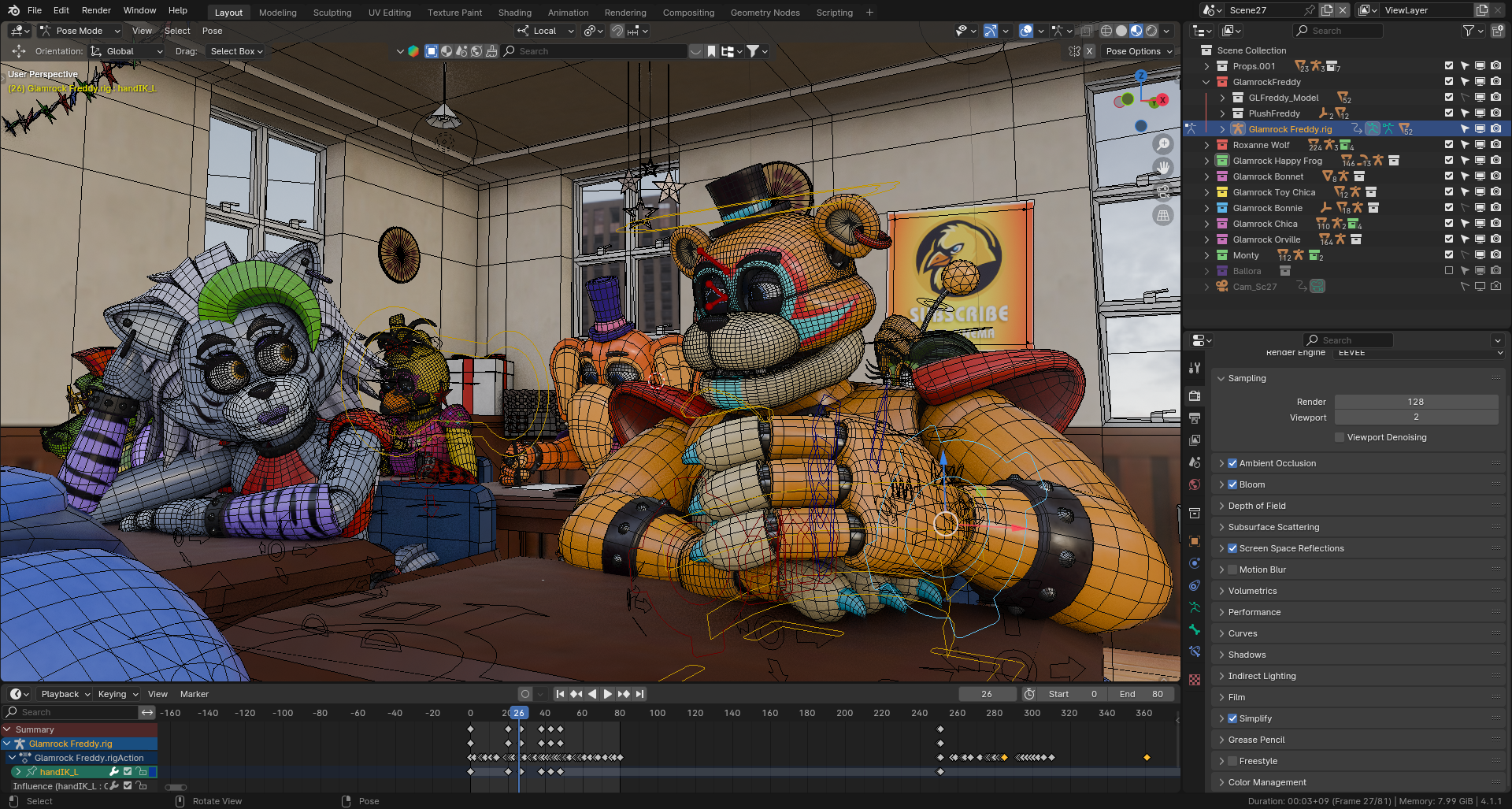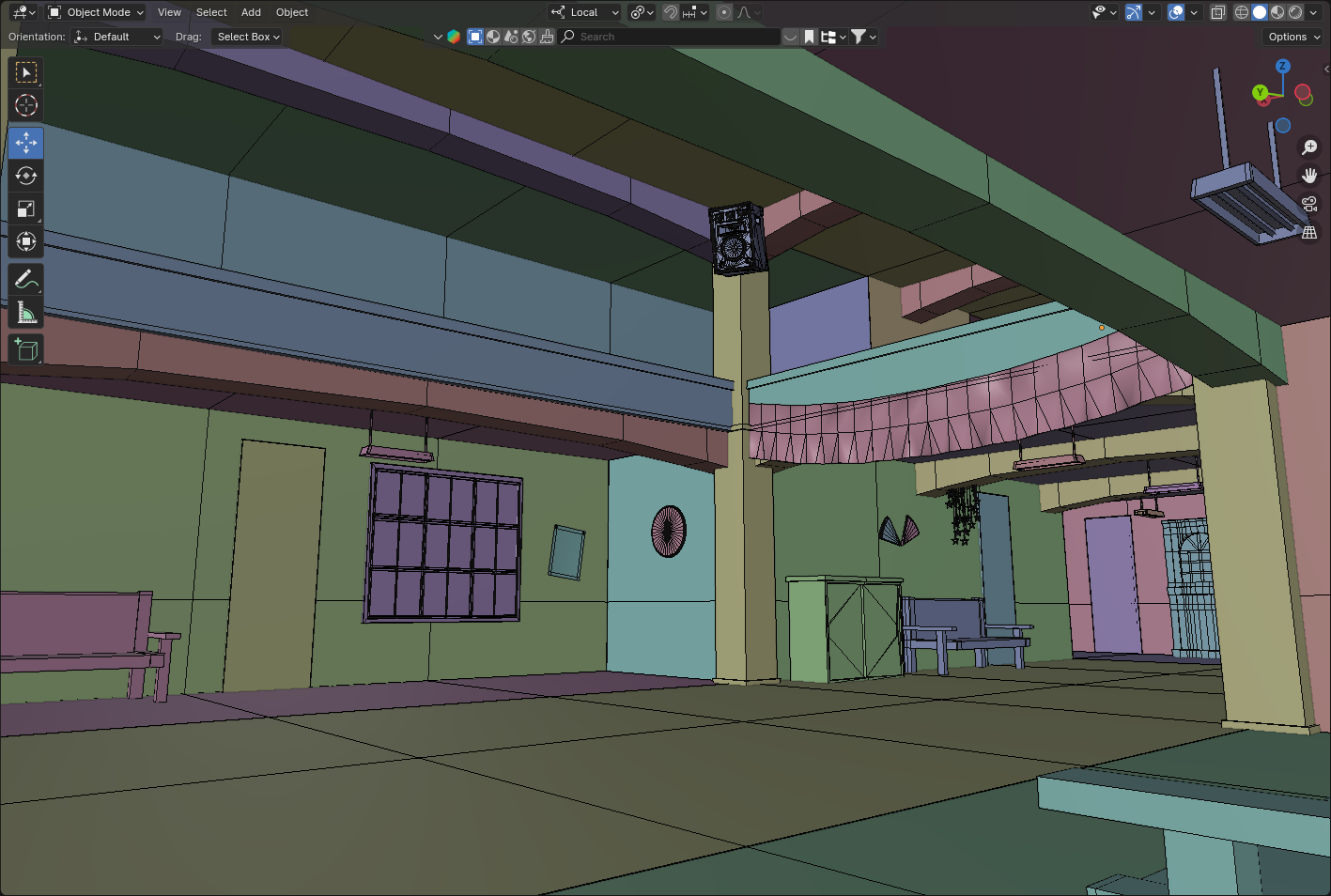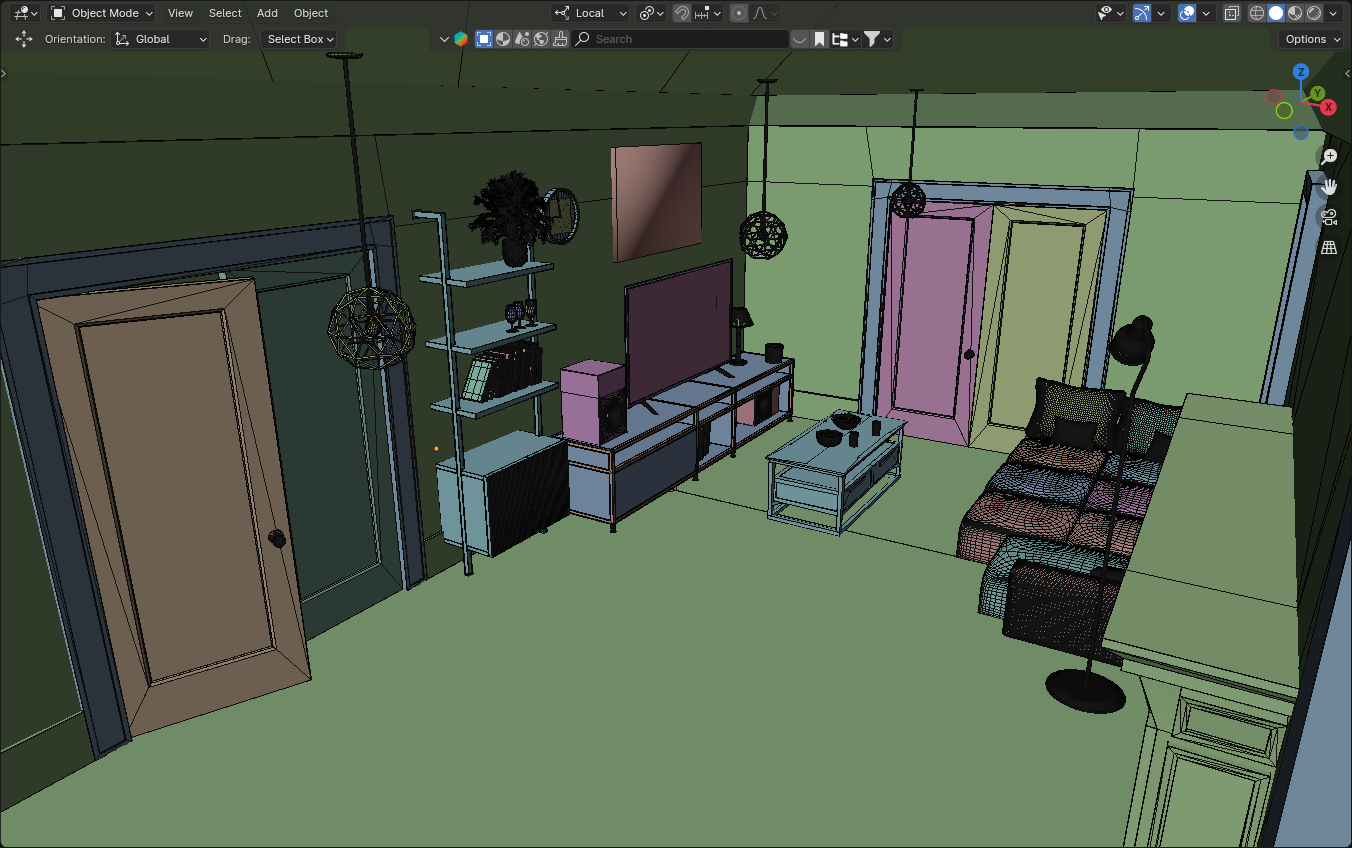"An animated series with life lessons for a children taught and enjoyed through a digestible, cute and simple animated episodes."
 Blender /
Blender /  Source: Filmmaker /
Source: Filmmaker /  After Effects /
After Effects /
This ongoing project is a series I contribute often. This 3D animated series employs the recognizable and comfortable Five Nights At Freddy's characters in a school-like environments and stories, target audience being primarily young children. When commissioned for a new episode, I use a workflow wherein I first write the logline/synopsis to draft a basic idea, this is also wherein the life lesson is incorporated. From that; areas, notable characters and situations are described. Afterwards; a shotlist and animation.
These projects are my favorites, as it allows me to explore creativity in a condensed and familiair setting. To make it easy and digestible, the life lessons are usually simple such as; value your friends, help others, don't fall for vanity, etc. I constructed narratives surrounding this lesson, usually shuffling leading characters to create variety in the total circumference of the series. None of the episodes are connected, but are situated in the same world if you will.
Usually the character animations are relatively simple and snappy, due to lack of dialogue (in order to cater to worldwide audiences), body language and clear emotions are paramount in order to convey intentions and moods. This allows me to focus on bodily character animations. Situations are usually reserved to school grounds, activities, sports, talent shows, clubs, balls and more.
Every episode requires multiple character animations, sound design, music composing, compositing, etc. As such, they are monolithic multiple month-spanning solo projects that touch upon all disciplines required to create an engaging story. The series is shared as multiple animators solo develop individual episodes, the ones listed here are by yours truly.
Most episodes are made using Source: Filmmaker, an old animation software primarily used for Team Fortress 2 animations. During the latter projects, I shifted my primary tool of animating to Blender due to greater creative capabilities and applicability to mainstream developments.
 Jaze Cinema
Jaze Cinema
In some episodes I was able to generally leverage characters from existing media, usually ripped from game files and augmented for animating within 3D softwares. The same applied to environments, apart from custom lighting and scene-dressing. This was different in the latter episodes entirely done within Blender, which required a lot of development time to prepare and engineer the environments including character rigs to an animation-friendly state for ease-of-use before a single keyframe is placed.




